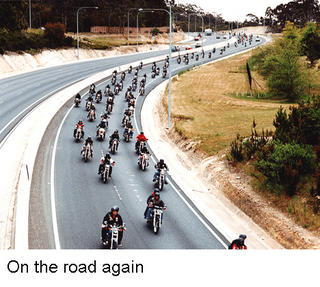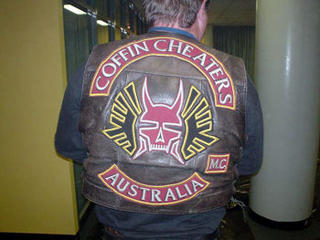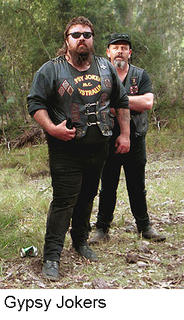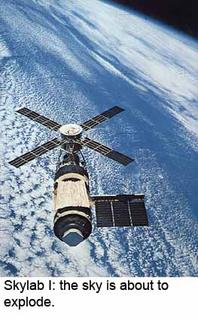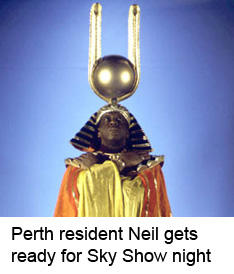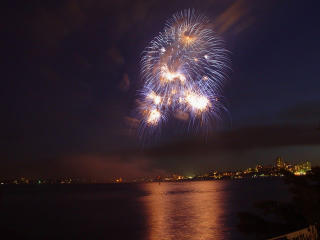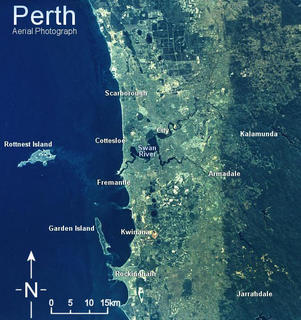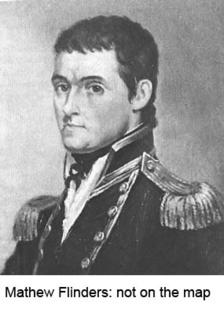8. Chelsea pizza An interview with Jose Mourinho
It was my good fortune to spend one evening dining in the affluent
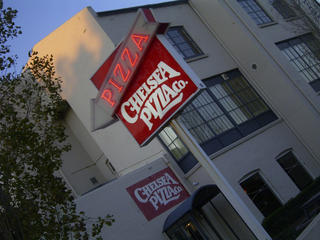
suburb of Nedlands, where London’s Chelsea Football Club manager Jose Mourinho has just opened the first in a chain of themed restaurants called Chelsea Pizza. Already a popular hangout for the local university crowd, the night became rowdier as the interview proceeded. The discussion took place in both English and Spanish with a relaxed Mourinho in a flour-stained apron.
Ramon Miguel Cadorna (RMC): Hello Jose and thank you for your time.
Jose Mourinho (JM): My pleasure Ramon.
RMC: First of all, congratulations for your success last season.
JM: Thank you. It was a great beginning for me in the Premier League, but still, we are dissatisfied. We didn’t win the Champions League and we failed to annihilate all our enemies, so we have a lot of work to do this season.
RMC: And your interest in domination is extending now to the pizza trade?
JM: Well yes. We want to keep Chelsea’s style and power operating at all levels. We want to reach from the ground up. Also, we make a lot of money selling pizza to Old Trafford for their buffet.
RMC: So why Perth? Why not open Chelsea’s first pizza bar in Leicester Square or New York?
JM: There are many reasons. First of all, we can play the best football and make the most beautiful pizza, but we cannot force people to watch or to eat. We want to attract people, magnetically, intrinsically. For me, it is like holding up a mirror. In Europe, the people have enough to see, for now, and aren’t ready for Chelsea. That is also why we win. Everyone knows the American’s cant play football (
laughs). Second, I am always one step ahead. I think one day there will be a market here for football and pizza. I am the first to arrive. It is me (
he shrugs). Thirdly, I have relatives here in Perth. Some of my family live in Fremantle. My great grandfather was sent here as a convict.
 RMC:
RMC: A convict?
JM: Yes. I am not ashamed like some of the Australians. My great grandfather Diogo was the only Portuguese man sent to the Fatal Shore for his crimes.
RMC: What was his crime, if it is not rude to ask?
JM: No, of course. He was transported for fourteen years for public and political dissent. He refused to apologise and was happy to be sent away.
RMC: But what of Perth’s reputation as being Dullsville? Are you worried there might not be much interest or profit?
JM: Sure. Dullsville. State of Excitement. It’s a risk, it’s a humble beginning, but we aren’t bothered with that reputation. We want our enemies to be strong as we will defeat them regardless.
RMC: Do you think Perth is boring?
JM: Yes. Yes I do.
RMC: Why do you think it’s boring?
JM: Why? It is difficult. I am here once a year to visit family. I am objective. But I say, it is because of expression. It is not an impassioned place like we have in Iberia, or in the change rooms at Stamford Bridge after another win. It seems a difficult place for a culture or a community to express itself from within. People are too cautious about expressing their view of culture. The emotion and the feeling are trapped inside. It is like the team bus is parked in front of the goal.
RMC: What causes this entrapment, in your opinion?
JM: I think two reasons. One is the youth. Everything is new here. There are so many places in the suburbs where nobody has lived before. There have been no generations and no impressions left to build upon. There have been no struggles for or against identity, if you discount the Aboriginals. Young people, they see this emptiness and it is frightening. It seems too vast to begin or perhaps seems unnecessary? It is difficult to find the alchemy or the leader that will ignite a cultural push or to keep it going. Everything here is yours from the beginning, it does not have to be fought for or repossessed or claimed. It is misleading. I think the isolation is one factor controlling this.
RMC: Isolation from the rest of the world?
JM: No. No. No. No. It is not that. That is laziness and a local weakness. There is the internet. There is telephones and aeroplanes. Yes it is more difficult to be far away, but people need to ask and it will arrive. There is not that desire. If you do not have attitude to win, you should not play.
RMC: What isolation do you mean then?
JM: Isolation from self and each other. There is too much personal space. Too much ownership. Community is separated by too many walls and it creates fear. It is like everyone trains alone and then is confounded when they can’t play as a team. There is perceived to be no necessity to come out of your own half. There is a perception that culture will arrive or will be found in the supermarket. Also, there are no managers to focus the vision of many into a unified action or style.
RMC: Do you think it could be an issue of having nothing to say?
JM: For some yes. But for a country, a state. No. It is impossible. I think it is a question of identity.
RMC: A cultural identity of boredom?
JM: Yes and no. If you think, in
Portugalwe are also still struggling to realise an identity. It is always newer and newer (shrugs). But we can look at our selves and see our history and a face we recognise from which we are derived. Here it is difficult. It is new, it is faceless. There is also the safety of acquired identity. My relatives, they are compelled by the Portuguese culture they left in Europe. In a sense they preserve it here more than we do in Portugal, because here it grows in isolation and does not evolve with the same influence of real Portugal. But their children are not born with the same responsibility to Portugal. It is diluted in each generation. Same for the Asians, whoever. They protect themselves in a community they recognise, but it is lost and assimilated in time. And then?
RMC: What do you perceive as the direction of the local identity then?
JM: I think this is the question. I think Dullsville is an important identity as it is the first. This is why there is pain. It is like birth. Every child is always screaming when it is taken from its mother. Now it is time to act here. Perth is Dullsville. If you don’t like it, it means you have to act. If you are one goal down, you have to score to re-enter the game. For the first time, Perth is being recognised and it is recognised as boring. Similar with Chelsea. After 50 years with no title, with no aura that precedes us, we have begun to express ourselves with personality. We have an identity now that is recognised. We have had to build this, from the goal keeper forward. Perth is the same. You have to fight back from Dullsville to domination. But you have to remember also, the best team can lose. That is also history and culture.
RMC: Finally Jose, can you tell us about your menu.
JM: We have many styles of pizza. Most reliable is the Makelele 12” which can satisfy three or four at once. We have the Thin and Crespo crust or the Deep Pan Drogba. We have the four-four-two: four cheeses, a variation of quatro stagione, four vegetables and two meats upfront. My favourite is the Che Guevara, hot and spicy, and when I am here, I like to cook the Special One myself. This pizza is second only to God.
RMC: Jose, thank you for your time.
JM: My pleasure.
